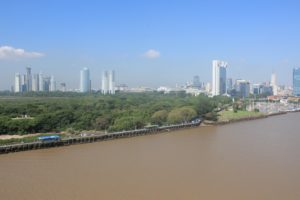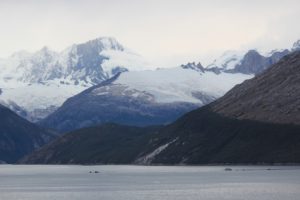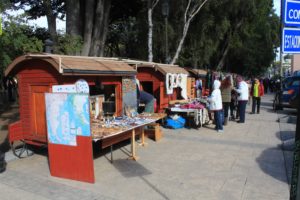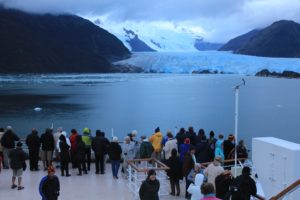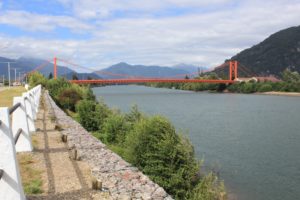Our second day in Buenos Aires was a trip to the airport and flying off to Iguazu. We booked ourselves a three day getaway from the ship to go and have a look at the Iguazu Falls. The trip included two nights staying in Iguazu on the Argentina side of the falls and one night over the border in Brazil at Foz do Iguazu. After landing we were met by our tour operator and taken to the hotel where we had a free afternoon before the tour proper the next day. For the afternoon, we went for a walk to what they call the Three Frontiers. This was about a 2 kilometre walk from our hotel and from this point you can see the borders of Brazil and Paraguay while standing in Argentina. The borders are separated by the Rio Iguazu, (Iguazu River) and Rio Parana,(Parana River).
The next day it was an early rise and then being picked up buy our guide who was going to show us around for the next few days. Our guide was a very attractive and young Jessica so I was very happy. The first day was visiting the Argentinean side of the falls and included a small train ride from the entrance to the National Park to the furthest stop point. Once off the train you have to walk quite a long way on platforms that cross over the rivers feeding the falls to get to the lookout points. The first lookout we went to was The Devil’s Throat. This is absolutely awesome and you do get very wet. The volume of water coming over the edge and the noise is something that you just have to see and experience. After about 15 minutes of getting wet and just being amazed we dragged ourselves away and caught the train back to our next stop point. This requires a bit of walking as you want to look at the upper and lower levels of the waterfalls. The walking is very easy and is all on steel walkways that they have put over the rivers. Must have taken them quite a few years to do. The top walkways take you to the edge of a lot of the falls and the views all along are all gob smacking. The lower walkways take you down close to the base of some of the falls and you also can get very wet here as well. We both wore bathers under our clothes which I would recommend. After a day that we felt was pretty special it was back to the hotel and wondering if tomorrow in Brazil would be as good.








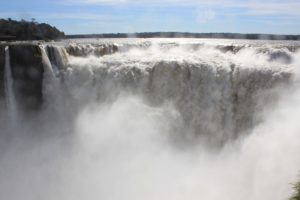
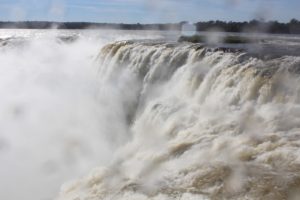
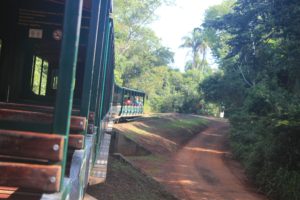











After another early get up it was in the car and the short drive to cross the border into Brazil. Jessica did tell us that we could wait up to an hour to cross depending on the crowds. It must have been our lucky day as it only took us about 10 minutes and we were in Brazil. We went straight to the National Park and to the falls. Just as we thought Argentina was awesome yesterday, Brazil was equally as impressive. From the Brazil side of the falls you get to see the whole vista of the falls. With the direction the sun goes as well you also see lots of rainbows from the Brazil side in all the water spray. You don’t realise fully until you see how long the falls are to just how incredible they are. They are over 3 kilometres in length and there are over 270 waterfalls making up the Iguazu Falls. Brazil doesn’t have the same number of walkways as Argentina but has some great views of the falls. We also did a boat ride in Brazil that took you up to part of the falls then under one of the small ones where you get very very wet. It was good fun and a great way to cool down in the hot weather. After it was back to our very nice hotel and a swim and cold beer around the pool. Later that night went out to a restaurant called Buffalo Bronco Churrascaria which was a Brazilian BBQ restaurant and for $30.00 each they just kept the food coming. Absolutely great value and they really had a hard time understanding what “no more” meant.
























If the Iguazu Falls aren’t on your bucket list, then put them on it. With all the pictures you see of these magnificent falls, to actually see them up very close is just mind-blowing. As from which is the best side to see them from, Argentina or Brazil, do both as each is very special and awesome. Our thanks go to Janet who arranged this little side trip for us and making it something special we will have with us forever.

